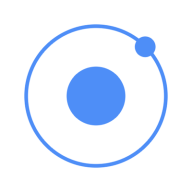

Xamarin Platform and Ionic compete in mobile app development. Ionic holds the upper hand due to its cross-platform capabilities and ease of use.
Features: Xamarin Platform integrates with Visual Studio, provides access to native APIs, and allows code sharing across platforms, which is beneficial for maintenance and development. Ionic boasts a vast component library, seamless Angular integration, and dynamic community support, enhancing its adaptability and plugin integration.
Room for Improvement: Xamarin Platform can improve in handling platform-specific configurations and reducing reliance on Visual Studio's complex setup. Efforts could be made to streamline Xamarin.Forms for varied app types and resolve third-party library issues in .NET MAUI. Ionic could enhance its native performance optimizations, offer improved support for extensive enterprise-grade apps, and streamline advanced plugin management.
Ease of Deployment and Customer Service: Ionic simplifies deployment using web technologies, facilitating easy updates. Community-driven support offers agility. Xamarin, backed by Microsoft, has a structured deployment process, but its platform-specific requirements complicate it. Microsoft's structured support offers reliability.
Pricing and ROI: Xamarin often bundles with Visual Studio, incurring licensing costs, posing barriers for small enterprises. It relies on leveraging .NET expertise for ROI. Ionic offers a cost-effective model with lower initial costs, attracting budget-conscious teams. Its development speed ensures quicker ROI and pricing flexibility.
| Product | Market Share (%) |
|---|---|
| Xamarin Platform | 7.4% |
| Ionic | 6.8% |
| Other | 85.8% |


| Company Size | Count |
|---|---|
| Small Business | 7 |
| Midsize Enterprise | 2 |
| Large Enterprise | 6 |
| Company Size | Count |
|---|---|
| Small Business | 18 |
| Midsize Enterprise | 5 |
| Large Enterprise | 14 |
Ionic is an open-source UI toolkit for developing high-quality mobile and desktop apps with web technologies such as HTML, CSS, and JavaScript. Ionic focuses on the frontend UX and UI interaction of an app – UI controls, interactions, gestures, and animations. It is simple to learn and can be used without any frontend framework by utilizing a simple script inclusion.
While previous versions of Ionic were strongly connected to Angular, version 4.x of the framework was re-engineered to serve as an independent Web Component library, with integrations for the newest JavaScript frameworks, such as Angular. Ionic works well in most frontend frameworks, including React and Vue, however some frontend frameworks require a shim to enable full Web Component support.
The official Ionic CLI, or Command Line Interface, is a tool that enables developers to easily construct Ionic apps and offers a number of useful commands. The CLI installs and updates Ionic and also includes a built-in development server, build and debugging tools, and much more. If you are an Appflow member, you may manage your account and carry out cloud builds and deployments via the CLI.
Ionic Features
Ionic has many valuable key features. Some of the most useful ones include:
Ionic Benefits
There are many benefits to implementing Ionic. Some of the biggest advantages the solution offers include:
Xamarin is an open-source platform for developing modern and performant applications for iOS, Android, and Windows using.NET. Xamarin is an abstraction layer that manages how shared code is communicated to the platform's underlying code. Xamarin is for developers with the two following goals:
Cross-platform sharing of code, tests, and business logic.
Writing cross-platform apps in C# with Visual Studio.
Xamarin allows developers to share an average of 90% of their program across platforms. This enables programmers to achieve native performance, look, and feel on each platform while writing all of their business logic in a single language (or reusing existing application code).
Xamarin applications can be created on a PC or a Mac and compiled into native application packages, such as an .apk file for Android or an .ipa file for iOS.
Xamarin Platform Features
Xamarin Platform has many valuable key features. Some of the most useful ones include:
Xamarin Platform Benefits
There are many benefits to implementing the Xamarin Platform. Some of the biggest advantages the solution offers include:
We monitor all Mobile Development Platforms reviews to prevent fraudulent reviews and keep review quality high. We do not post reviews by company employees or direct competitors. We validate each review for authenticity via cross-reference with LinkedIn, and personal follow-up with the reviewer when necessary.